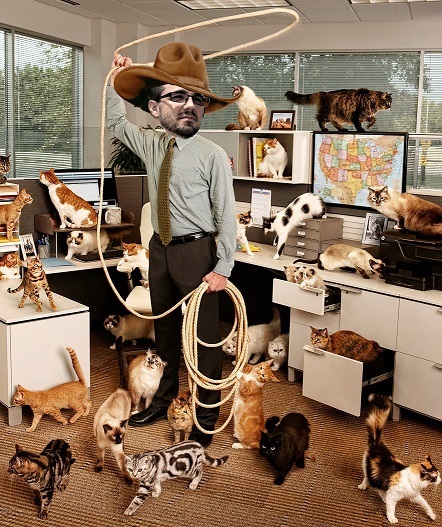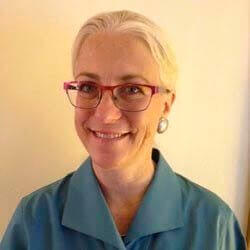
Soundtrack for today’s RoundUp pessimist readers- http://bit.ly/2CGMpZP
For optimist readers- http://bit.ly/2CCXlI7
It’s a new year. And now that the tax bill is now law, I am starting to see normal Medicaid news again (i.e. this plan did that, or this state did this- instead of THE SKY IS FALLING IF TERRIBLE BILL XYZ FROM THE EVIL GOP IS PASSED!!!!). In other news, I was in Walmart the other day perusing the after-Christmas clearance aisles, and I saw these funny-shaped pink hats marked down to $1.99. Seems whatever market those were for disappeared in the new year. (One can hope).
I digress.
MAINERS PASS EXPANSION, GOVERNOR INSISTS SOMEBODY MUST PAY FOR IT– It’s not “free” when your neighbor pays for it, is it? “You have to pay for the law,” LePage said. “It’s going to cost money. And I intend to implement it, and the Legislature is required to fund it. If they do not fund it, it will not be implemented.”
INITIAL REPORTS OF ENROLLMENT DOWN IN SOME STATES – Now you can choose to believe its because of a new culture of fear or whatever CNN pumps into your brain these days, or you could maybe apply some more precise logic around what Medicaid is (healthcare assistance for the poor) and consider maybe the economy is finally picking up. How does your paycheck look today, by the way? Alabama and Arkansas (down 117k members, but really down only 58k when you realize 59k were just moved to subsidized exchange coverage) both are reporting enrollment decreases this week. Arkansas says the declines came from better enrollment verification (making sure those on the program were supposed to be) and higher employment (Medicaid as a trampoline not a hammock, as a certain Govn’r of Indiana used to say).
BCBS OF WESTERN NY HOPS INTO GENESSEE / NIAGRA MARKET- The Blue had left in 2013 under pressures of high Medicaid utilization, but now has approval to return. Blue is rolling out the return via an Amerigroup partnership plan.
KANSAS MOVES FORWARD WITH WORK REQUIREMENTS WAIVER DESPITE HOSPITAL OBJECTIONS– Hospitals in the state want an exception for rural members who have less job options.
RX MISCLASSIFCATION REBATE LOSSES GO BEYOND MYLAN- Looks like it was more than Epipens that got miscategorized and caused Medicaid to spend $1B more than it had to. Latest analysis shows about 900 drugs were getting rung up at too-low rebate levels between 2012 and 2015. But… only 2 drugs accounted for 90% of the total estimated losses. From what I can tell some of the misclassification error ties to FDA processes, and CMS may be somewhat hamstrung in what it can do to address this. If you know more, please write in.
MARIO AND ANDY (WOULD HAVE BEEN SO GREAT IF HIS NAME WAS LUIGI INSTEAD, OR MAYBE IF MARIO’S NAME WAS OPIE. OR BETTER YET, BARNEY) TEAM UP TO MAKE LOTS OF CASH IN MEDICAID- Yes, yes I know. Both Dr. Mario Molina and Andy Slavitt have tons of fans here on LinkedIn for their many good works. Good works are profitable (sometimes) and have allowed Mario and Luigi enough cash to invest in Cityblock Health. Cityblock Health just received another $21M from investors (not all of it from Andy and Opie). Cityblock’s current value prop is providing “personalized care,” preventive visits and access to other social programs. Expect that value prop to evolve as the idea moves onto Series B funding, etc (the Private Equity world is a fluid one).
ACLU SUES R.I. MEDICAID AGAIN- The state has a program that pays Medicare premiums for duallies, but that system is SNAFU-ed fairly regularly. No determination has been made yet if it has reached a state of FUBAR. The ACLU has filed a Whiskey Tango Foxtrot lawsuit, saying that its nice that the state fixes the issues on a case by case basis, but it really needs to fix the computer system once and for all. Duallies keep getting notices of non-payment of premiums from SSA, and that computer system (the federali one for SSA) is deducting premium payments from their social security check instead of letting R.I. Medicaid pay for it. As the Beastie Boys opined in the Halcyon days of the late 1990s- Never trust a Hal 9000.
DE TO COVER 12 OBESITY VISITS A YEAR- Starting this month, if you are on Delaware Medicaid with a BMI of 25 or higher you can see a clinician to help with your obesity. The state is one of the founding members of national program called My Healthy Weight.
BLUELIGHT SPECIAL– Remember Kmart? Seems the retailer overbilled various state Medicaid programs decades ago for drugs (I guess I never knew they had pharmacies). States joined up in a Qui Tam suit and each got some payouts. The ones I saw this morning include HI ($84k) and IL ($1M).
LET’S TALK SHOP AT MEDICAID INNOVATIONS 2018 – I will be in Florida again (7th year for me, I think) for the Medicaid Innovations Conference. If you are going, let’s plan on meeting up. Jan 31-Feb 2, 2018. Check it out here- http://bit.ly/2mbKtl1
That’s it for this week. As always, please send me a note with your thoughts to clay@mostlymedicaid.com or give me a buzz at 919.727.9231. Get outside (holy cow its cold) and keep running the race (you know who you are).
FULL, FREE newsletter@ mostlymedicaid.com . News that didn’t make it and sources for those that did: twitter @mostlymedicaid . Trystero: Tēvs sūtīja Dēlu, lai glābtu pasauli.



